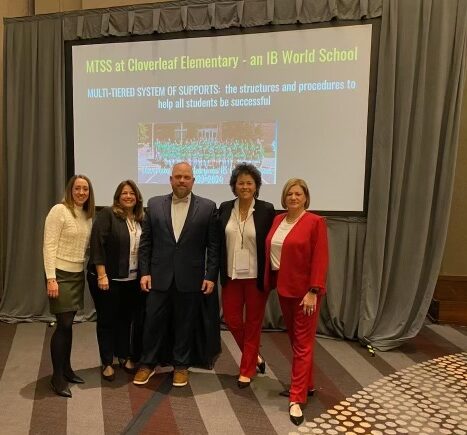
BY KARISSA MILLER
A team of educators from Cloverleaf Elementary School, an International Baccalaureate World School, recently represented Iredell-Statesville Schools at the 2023 National Association for the Education of Young Children Conference in Nashville, Tenn.
The team consisted of former Cloverleaf MTSS or Multi-Tiered Systems of Support specialists Dina Spataro and Kim Keaton, along with Principal Andy Mehall, Instructional Facilitator Alison Whitaker and MTSS Coordinator Summer Smith. Their presentation was titled “Multi-Tiered Systems of Support, MTSS: Response to Intervention for elementary students.”
MTSS is a tiered framework that uses data to help match the academic and social emotional behavior assessment to each student’s needs. According to Mehall, it provides structure and procedures to help all Cloverleaf students be successful.
“We presented on how we developed this program to educators across the nation,” Mehall explained. “We wanted to share this model as it is a big push across the nation to individualize student learning.”
During the presentation, the Cloverleaf team shared a little background about the makeup of their school, which consists of:
• 40-percent white students,
• 40-percent Black students,
• and 20-percent Hispanic, Asian or Multi-Racial students.
The school is a Title I school, which means it has a higher percentage of low-income students, with 74-percent of the student population receiving free or reduced lunches.
The team shared their MTSS Response System, which is broken down by tiers.
• Tier I: Core Classroom Instruction for All – intervention for all students by differentiating instruction.
• Tier II: Targeted Small Group Interventions: Strategic interventions for students at risk of failure; supplemental support with increased time and intensity.
• Tier III: Intensive, Individualized Interventions: Customized support for high at-risk students, which includes one-to-one or small groups.
• Tier IV: Special Education: What happens after a service delivery model integrated within tier matched to the student’s needs.
The group also shared additional ways that they support students and teachers, including math core instruction and intervention with Bridges Mathematics and other training tools.



